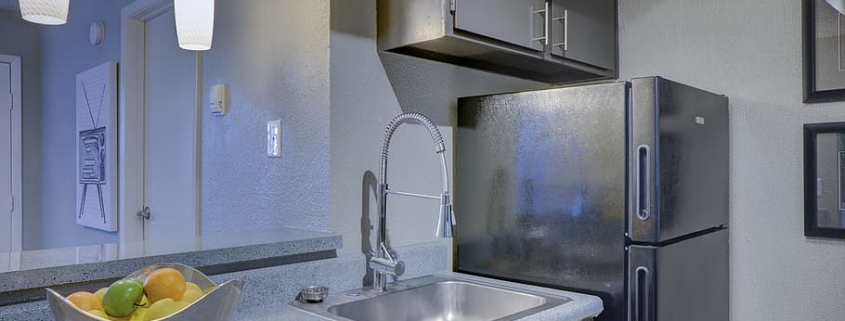Tips for Improving Refrigerator Performance
Many people in Marin County don’t realize just how much energy appliances consume every day – until the electricity bills arrive or until a dryer, oven, or freezer breaks down suddenly. It’s common for us to want to find ways to cut energy uses and trim those utility bills – but at what cost? We can turn down our water heaters to save money, but do we then suffer through cold showers? We can turn up the thermostat on the refrigerator, but will it be in exchange for milk and eggs that are barely cooler than lukewarm?
Maximizing Refrigerator Energy Efficiency
The good news is that there is usually a happy medium between performance and energy consumption and in turn, utility charges. One of the biggest energy consumers in the home is the fridge – in fact, about 14% of your energy bill is attributed to running your refrigerator! Since this appliance is responsible for so much of our utility costs each month, let’s take a look at some things you can do to improve its performance and in turn, maximize energy efficiency and lower your bills.
The key here is to improve refrigerator performance to reduce energy consumption without having to compromise on temperature. When appliances run at maximum energy efficiency, they won’t work harder than they were designed to, won’t use more energy than they should, and they won’t break down prematurely, making a call to an appliance repair specialist necessary. Here are some tips to ensure your fridge is performing at its peak:
- Close the Doors
Have you ever grabbed a handful of items from the fridge and walked away from it to place them on the counter – without shutting the fridge door? It may sound obvious, but one of the easiest things to do for your fridge’s performance is to keep the doors closed. When cold air escapes from the fridge – and it doesn’t take long for that to happen with open doors – it will require a much greater amount of energy to return to the correct temperature inside. Don’t learn the hard way that leaving the doors open unnecessarily will have a significant impact on the appliance’s performance (and your energy bill).
- Don’t Hurry to Put Leftovers in the Fridge
Although you never want to leave food sitting at room temp for long, you also don’t want to put hot food into the refrigerator. Homeowners from Mill Valley to San Francisco will be the first to say that the impact that placing hot food in a fridge has on performance is very noticeable – for hours afterwards, an increase in temperature is evident. This is because the refrigerator must work much harder than it should to negate the hot temperature of the food that was just tossed in there. It’s a concept similar to leaving the doors open: When heat is added (or cold air taken away), your energy bill will prove that it’s hard for a fridge to catch up to the temp it needs to be.
- Replace the Door Seal
One of the most important parts of a fridge that has everything to do with performance is a part that you probably don’t think about very often: the rubber door seal. Without this part of the door, an airtight seal wouldn’t be possible, and warm air would seep into the refrigerator as cold air escaped – constantly. Check the door gaskets (seals) and make sure that they haven’t lost their suction, because even with regular use, they wear out and can become brittle and crack over time.
- Get Rid of Excess Frost
The inner condenser coils of refrigerators can sometimes freeze up; there could be a buildup of frost and ice that will force your fridge to work overtime. Be sure to manually defrost the appliance every time you notice a quarter inch of ice on the interior walls of the freezer. If you’re not sure if it’s time to defrost or not, be sure to contact our appliance repair experts for help.
- Keep an Eye on the Temperature Inside
While you don’t want to turn your refrigerator temperature too far up, increasing it just slightly can turn into sizeable savings on your electric bill. For most models, the ideal fridge temperature for optimal efficiency should be between 36 and 38 degrees Fahrenheit, with the freezer at 0 to 5 degrees F. Many refrigerators don’t provide specific degree readings; if yours is one of them, setting the temperature dial at the midpoint is usually spot on for efficiency.
By following these five tips to increase the efficiency of your fridge, you’ll reduce your energy consumption and save money. In addition, you’ll extend the life of your appliance by eliminating the need for it to work harder than it should. For more information on other ways to cut your energy bills or for appliance repair in San Francisco, contact the experts at Absolute Appliances Repair today.




